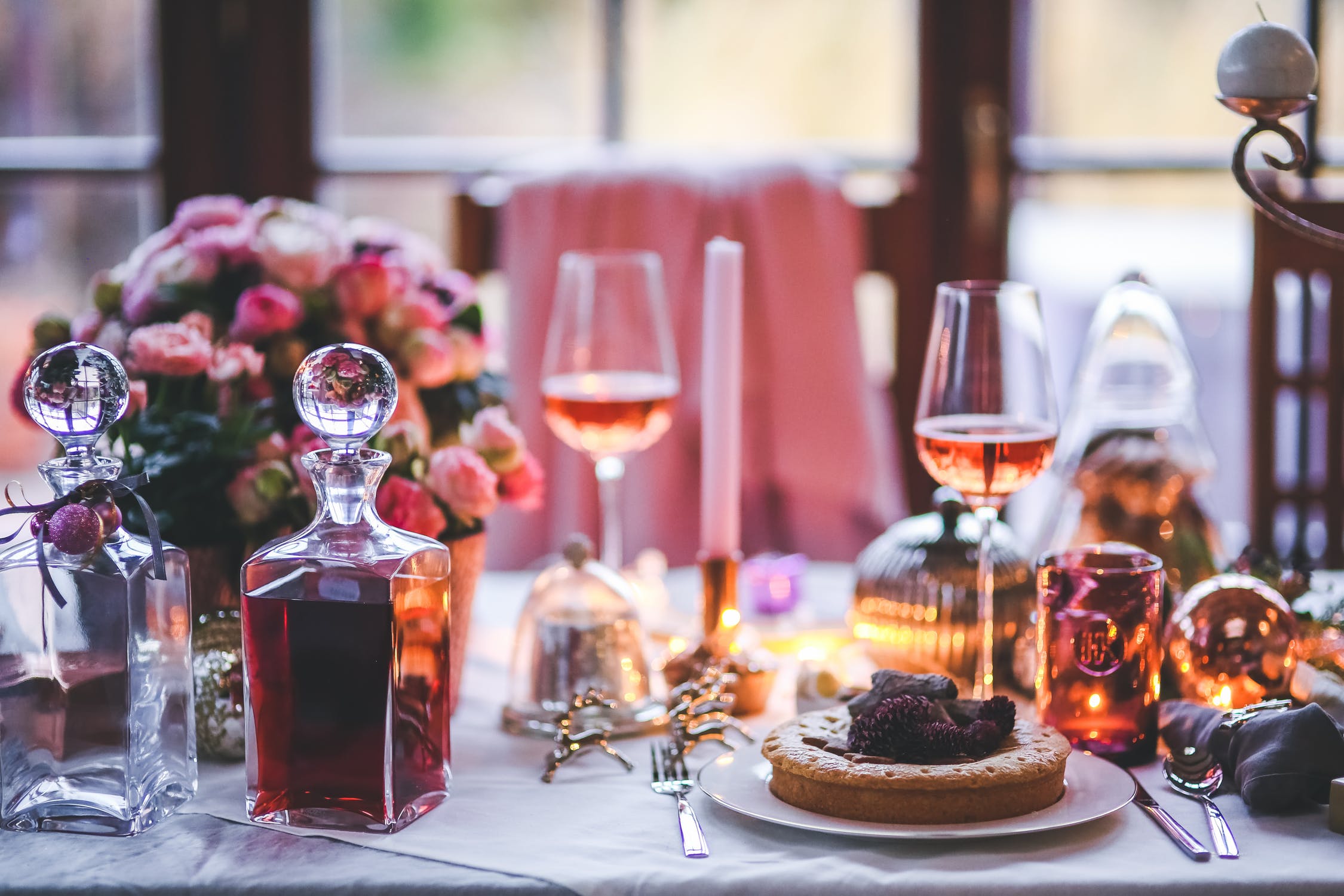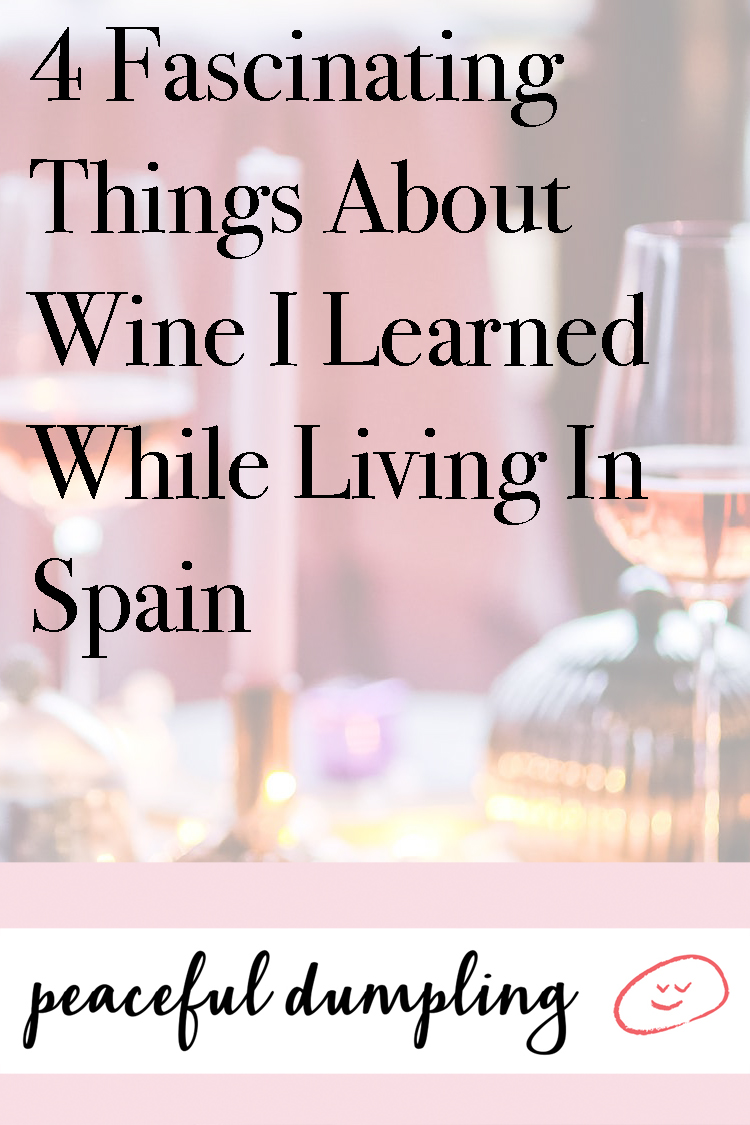My life in Spain was like a scene from Sex and the City. I know it sounds cliché, but it’s true. A weekend did not go by without plans. My girlfriends and I always visited new cafés and bars, sometimes wearing great accessories that were purchased at some artisan or vintage market. We looked put together, having acquired a more Spanish sense of style only a few months after moving there (adaptation never felt so easy). Lipstick and simple hors-d’oeuvre were all we needed to bring a bottle of red wine to someone’s house. A glass of red often accompanied long lunch breaks and late-night dinners. For us, Rioja was always the easy wine choice. Just like a black dress, Rioja goes with every occasion.
Towards the end of my two years living in Madrid, I decided to visit Spain’s famous wine region: La Rioja. There is just something about that Rioja wine that adapts to everyone’s taste-buds so well. It is both a delicacy and an ordinary drink.

There was a time-limitation to the trip, so I chose one particular winery to educate me on the mysteries and luxuries of wine: Marqués de Riscal. Since 1858 this winery has grown to fame and prestige. Housing a Michelin star restaurant and a hotel designed by Frank O. Gehry, Marqués de Riscal is one of the oldest wineries in the Rioja region. For €12 you can have a one-hour group tour, explaining every step of wine-making in Marqués de Riscal and ending with a wine-tasting. I had never done a wine tasting before, so I promptly took note of what I considered the highlights. Here are the four things I learned about wine in Spain’s Rioja region:
1. Cork vs. Cap
Wine bottles sealed with a cap rather than a cork are not “cheap” quality like many believe. Caps are best for wines that did not spend a long time fermenting in the barrel. The cap does not let any oxygen into the young wine, which would happen if a cork was used. But with older wines, corks are favorable because the oxygen will improve the taste.
In countries with a strong wine culture like Spain, France and Italy, the cap has not been well received. Even our French tour lady explained she felt something special about pulling out a cork from a wine bottle. It is engrained in the culture. In countries like the United States, Mexico and Paraguay, the cap has been well received because it is easier and more comfortable. Never will I ever judge a wine by its cap again.
(If you do buy wine with a cork, be sure to recycle the cork. Here’s how.)
2. Steps to Wine Tasting
The poised, French tour guide grabbed a glass of wine herself and looked at it. “First, you have to see the wine. Look at its color. Is it dark? Is it see-through? Notice its texture.” The second step is to smell the wine. Try to identify if it smells fruity, earthy, sweet. The last step is tasting it. Take a mindful sip. How does it taste? Having other wines to compare helps distinguish certain flavors. This part of the tour was not my forte as all the wine tasted great to me! But I think the point was to distinguish the ingredients and aging.

3. Labels
When a wine hasn’t been labeled yet, the bottle is referred to as “undressed.” We saw hundreds (if not more) of undressed bottles at Marqués de Riscal. This is because labeling changes according to the regulations of each country. Bottles remain undressed until they know exactly where each one is going. In Marqués de Riscal, 65% of the wine is exported and 35% stays in Spain.
4. Wine Salt
Something I loved about the region’s cuisine is the wine salt they use for seasoning. This was something I did not see anywhere else in Spain. The salt is purple, and it adds an unforgettable flavor to everything! I still drool over the perfectly steamed asparagus with beautiful purple wine salt sprinkled over it – a touch of olive oil dripping over them. Not buying the wine salt to bring home became a big regret once I had left La Rioja region. The seasoning of your veggies will be one to remember. I am telling you now, so you do not make the same mistake.

I get that Madrid, Barcelona, Sevilla and Ibiza win the popularity contest when it comes to places to visit in Spain. Those are cities everyone seems to have at least heard of. But consider squeezing in a couple of days and nights in the Rioja region, where you will get a culinary experience of Spain that not many visitors have in other parts of the country. I doubt there are Spanish homes without at least one bottle of Rioja somewhere in their kitchen. Rioja is the milk and orange juice of family meals or friend’s get-togethers. Go a little out of your way to get even more immersed in Spain’s culture…And bring some wine salt home with you.

Have you been wine tasting? What was your favorite part?
Also by Vanessa: How I Became A Woman Globetrotter & Learned To Embrace My Own Path
Related: Medieval Towns & Heavenly Wine—Just A Few Reasons Portugal Is A Top Euro Destination
Drinking Responsibly: Finding Vegan Wines
Get more like this–sign up for our newsletter for exclusive inspirational content!
__
Photo: Pexels
